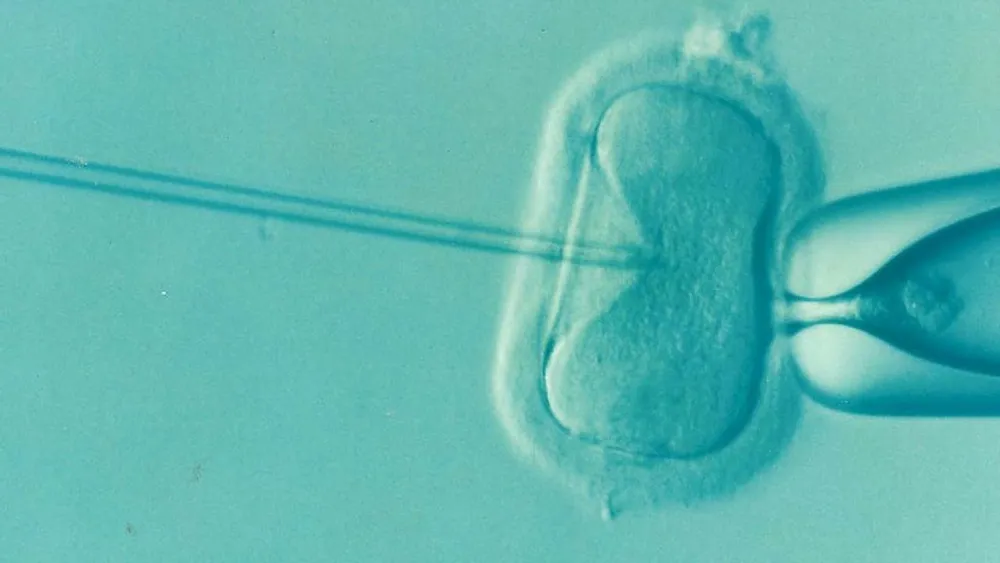Three-Person IVF Technique Prevents Inherited Diseases in Children

UK scientists have achieved a significant breakthrough in reproductive technology, reporting that a three-person in vitro fertilization (IVF) technique has saved eight children from severe genetic diseases. This innovative approach utilizes healthy donor eggs to replace compromised maternal mitochondria, offering new hope for parents at risk of passing on mitochondrial disorders.
The technique involves a complex process where genetic material is transferred from the mother's fertilized egg, which retains its nuclear DNA, into a healthy egg supplied by a donor. This method is currently not permitted in the United States, making the findings from Newcastle University particularly noteworthy.
By utilizing donor eggs, the procedure successfully eliminates the risk of mutated genes located in the mother's mitochondria—an essential component of cellular function—which could lead to life-threatening conditions. Mitochondrial DNA mutations have the potential to impact vital organs that require significant energy, such as the brain, heart, liver, muscles, and kidneys.
The eight children born from this method range in age from infants to two years old and have shown remarkable health outcomes. According to scientists, routine blood tests indicate negligible or low levels of mitochondrial gene mutations, and all children are achieving normal developmental milestones.
Dr. Andy Greenfield, a reproductive medicine expert from the University of Oxford, emphasized that the results are the culmination of extensive efforts spanning scientific challenges, ethical considerations, public engagement, and regulatory frameworks. He noted that the rich data gathered from these cases could pave the way for further research in mitochondrial donation.
During the IVF screening process, practitioners identify low-risk eggs with minimal mitochondrial mutations suitable for implantation. However, when no viable options exist, this three-person technique becomes essential. It begins with fertilizing the mother's egg and follows with a careful transfer of genetic material into a donor egg stripped of its own nuclear DNA.
This sophisticated process, elucidated in a recent publication, effectively replaces faulty mitochondrial DNA with that from the donor, as explained by senior researcher Mary Herbert from Newcastle University. The researchers noted that blood levels of mitochondrial DNA mutations in newborns were reduced drastically—by 95 to 100 percent in several cases compared to maternal levels.
The findings suggest that this pronuclear transfer technique is indeed effective in diminishing the transmission of mitochondrial DNA diseases. Out of a study involving 22 women with high risk for passing these genetic conditions, eight have successfully delivered healthy children, while another participant is currently pregnant.
The study reported that all pregnancies were straightforward, with no occurrences of miscarriage. In an experimental approach, researchers also attempted to transplant the nucleus of an unfertilized egg but concluded that the current method was more reliable for averting genetic disorders.
The UK pioneered mitochondrial donation treatment legislation in 2015, positioning itself as a leader in this revolutionary field. In stark contrast, the United States effectively halted similar research through legislative measures, reflecting a complex landscape in genetic research and healthcare policies.
Read These Next

OpenAI and the UK: Using AI to Improve Public Services
This article explores the recent partnership between OpenAI and the UK government to integrate AI into public services, explaining its significance, mechanics, and real-world implications.

New Platform Revolutionizes Protein Evolution for Next Gen Therapies
Australian researchers have launched PROTEUS, a protein engineering platform enhancing medical treatment design and gene therapy.

Chinese Scientists Reveal Nucleolus Structure's RNA Role
Analysis of a significant breakthrough in cellular biology regarding nucleolus structure and RNA processing, highlighting its implications and potential future applications.
